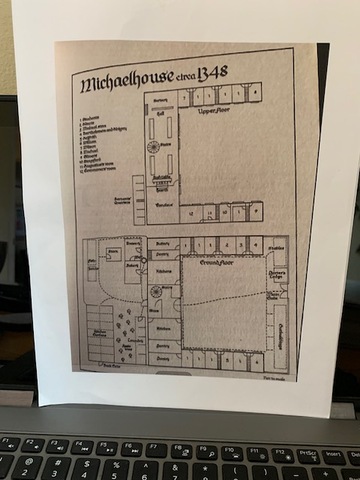
I'm diving into another draft of my novel set in 1351 and I thought I would share with you the building that I'm using as a model. This is a schematic entitled Michaelhouse circuit 1348[i] , "a college for scholars in Holy Orders" that existed between 1323 and 1546 and has now been incorporated into the College at Cambridge. Despite it being a college, it has features that can be found in many medieval manors.
- First, note that this manor is nearly self-sufficient. It has a fruit orchard, kitchen gardens, and a fishpond for food, with a brewery and bakery for bread and ale. Read More